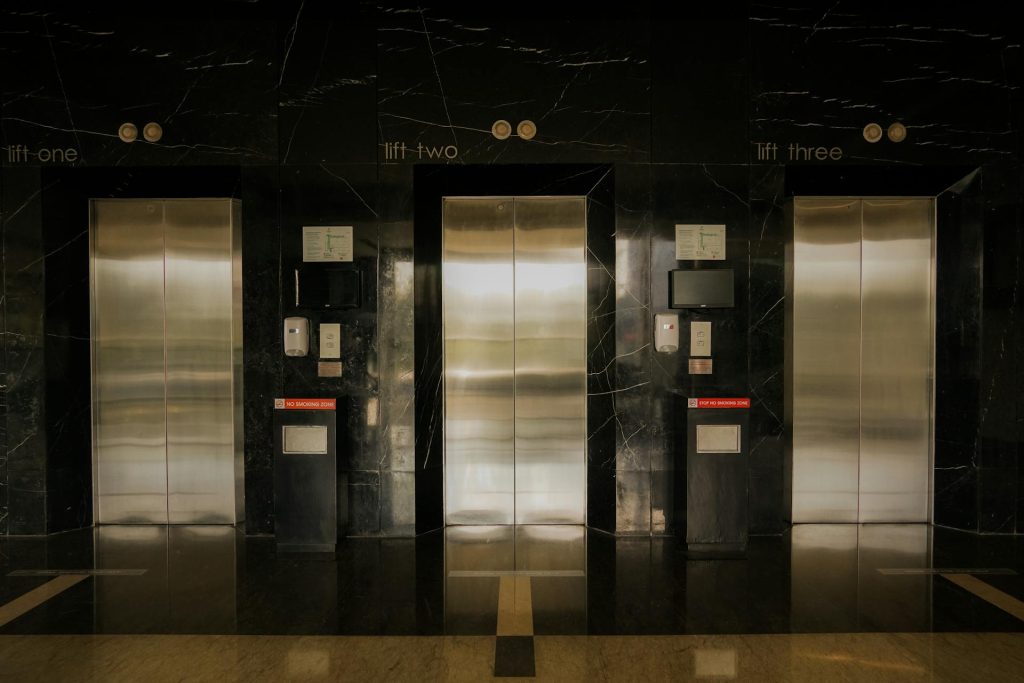Step into an elevator and you are entrusting your safety to a complex system of mechanisms working seamlessly behind the scenes. This article delves into the vital safety systems employed in electric elevators, ensuring a smooth and secure ride for passengers. From emergency stop systems to door safety features, learn how these technologies prioritize passenger well-being.
By exploring the inner workings of elevator safety systems, readers can gain a deeper understanding of the meticulous design and engineering that goes into creating a safe vertical transport experience. Stay tuned to uncover how these innovative solutions not only protect passengers but also offer peace of mind during every ascent and descent.
The Basics of Electric Elevators
Elevators are a marvel of modern engineering, revolutionizing vertical transportation in buildings across the world. These sophisticated systems consist of a car that moves within a shaft along vertical rails, guided by cables and pulleys. Electric elevators have transformed urban landscapes, allowing for efficient movement between floors with ease and speed.
Operating on a system of counterweights and motors, electric elevators function seamlessly to transport passengers safely from one floor to another. The intricate network of gears and motors ensures smooth operation, utilizing electricity to power the elevator’s movement with precision. This reliance on electricity not only enhances efficiency but also contributes to the eco-friendliness of modern elevator systems.
Advancements in technology have led to the development of smart elevators, equipped with state-of-the-art features such as destination dispatch control and predictive maintenance capabilities. These innovations enhance user experience and improve operational efficiency, making electric elevators an essential component of contemporary architecture that promises enhanced safety and convenience.
The Importance of Safety Systems in Electric Elevators
In the realm of vertical transportation, electric elevators stand as a pinnacle of modern engineering. These marvels of technology have revolutionized urban landscapes and brought convenience to our daily lives. However, amidst their efficiency and speed, lies a critical aspect that cannot be overlooked – safety systems.
Preserving Passenger Security
Imagine being suspended high above the ground, trusting your safety to a complex network of cables and pulleys. In this scenario, the significance of safety systems becomes abundantly clear. These systems act as silent guardians, constantly monitoring and intervening to ensure that every ride is smooth, secure, and free from harm.
Cultivating Confidence in Vertical Mobility
By investing in robust safety mechanisms, elevator manufacturers not only prioritize passenger well-being but also foster a sense of trust and reliability. Knowing that meticulous attention has been given to every conceivable hazard instills confidence in users, encouraging them to embrace the wonders of vertical mobility without reservation or fear.
Emergency Stop System: Ensuring Quick Response
In the realm of elevator safety systems, the Emergency Stop System stands as a crucial mechanism for ensuring quick response in times of potential danger. This system, typically activated by a prominent button inside the elevator car, is designed to immediately halt all movement and bring the elevator to a safe stop in case of emergencies.
Imagine being in an elevator that suddenly experiences a malfunction or an unforeseen issue. The Emergency Stop System serves as a beacon of reassurance, offering passengers a swift and reliable solution to swiftly pause any movement and prevent further escalation of the situation. This instantaneous response mechanism not only provides peace of mind but also showcases the advanced safety measures implemented in modern elevators.
Furthermore, the integration of advanced technology in emergency stop systems has significantly enhanced their responsiveness and effectiveness. With features like real-time monitoring and automatic alerts to building management or maintenance personnel, these systems ensure that help is swiftly on its way in critical situations. Thus, passengers can rest assured knowing that should an emergency arise, the elevator’s rapid response capabilities are at their disposal.
Door Safety Systems: Preventing Accidents
When it comes to elevator safety, door systems play a crucial role in preventing accidents. Automatic door sensors are designed to detect any obstructions, ensuring that the doors do not close when someone or something is in the way. These sensors use infrared technology to monitor the door’s path and prevent it from closing if an obstruction is detected.
In addition to sensors, door interlocks are another essential safety feature. Interlocks ensure that the elevator cannot move unless all doors are securely closed. This prevents passengers from accidentally exiting the elevator while it’s in motion or getting caught between closing doors. Door interlocks provide an extra layer of protection and peace of mind for passengers.
Furthermore, modern elevator door systems are equipped with safety edges that stop the doors from closing if they come into contact with an object or person. These sensitive edges detect pressure and immediately retract the doors to prevent any injuries or accidents. By incorporating advanced safety technology into door systems, elevators can provide a secure and worry-free experience for all passengers.
Overload Protection: Keeping Passengers Safe
When it comes to elevator safety, ensuring that the elevator does not exceed its weight capacity is crucial. Overload protection systems are designed to prevent elevators from operating when they are carrying more weight than they can safely handle. This not only protects the elevator from potential damage but also ensures the safety of passengers who rely on it for transportation.
Modern overload protection systems use advanced sensors and algorithms to constantly monitor the weight inside the elevator cab. If the weight limit is exceeded, the system will automatically stop the elevator from moving and alert passengers with a warning message or alarm. This proactive approach helps prevent accidents that could occur if an overloaded elevator were to malfunction while in operation.
In addition to protecting passengers, overload protection systems also safeguard the mechanical components of elevators. By preventing excessive strain on motors, cables, and other vital parts, these safety systems help extend the lifespan of elevators and reduce maintenance costs. Ultimately, investing in reliable overload protection not only keeps passengers safe but also contributes to the overall efficiency and longevity of elevator systems.
Speed Governors: Controlling Elevator Speed
Speed governors are integral safety devices in electric elevators, ensuring that the elevator does not exceed its maximum rated speed. In the event of overspeed, these governors engage and trigger the emergency brake system, bringing the elevator to a safe stop. This crucial mechanism prevents accidents and instills confidence in passengers.
Elevator speed governors operate on a simple yet effective principle – they detect the speed of the elevator car through a series of pulleys and cables connected to a centrifugal force mechanism. When the predetermined speed limit is surpassed, the governor triggers immediate action to slow down or halt the elevator. This precision engineering underscores the commitment to passenger safety in modern elevators.
While some may view speed governors as merely a technical component, they represent a synergy of innovation and reliability aimed at protecting passengers. By regulating speed with unmatched accuracy, these systems create a seamless and secure vertical transportation experience for all users. Elevators equipped with advanced speed governor technology exemplify how engineering excellence can elevate safety standards to new heights.
Buffer Systems: Cushioning the Impact
In the realm of elevator safety systems, buffer systems play a crucial role in mitigating the impact during emergency situations. These ingenious mechanisms are designed to soften the blow in case of a sudden stop or free fall, providing a cushioning effect that helps protect passengers and minimize injuries.
Comprising of sturdy materials like springs or hydraulic cylinders, buffer systems are engineered to absorb kinetic energy and gradually bring the cabin to a gentle halt. This innovative technology not only safeguards passengers but also prevents structural damage to the elevator itself, ensuring its longevity and reliability even after unexpected events.
Considered as the last line of defense in elevator safety, buffer systems exemplify human ingenuity at its finest. By incorporating these advanced shock-absorbing devices into modern elevators, engineers have successfully heightened passenger confidence and provided peace of mind for all who step foot inside these vertical transport marvels.
Interlock Systems: Enhancing Security
The interlock system in electric elevators plays a crucial role in enhancing security by preventing unauthorized access to elevator shafts. This system ensures that the elevator doors remain locked unless the elevator car is present at that floor. It acts as a barrier, safeguarding against accidents and intrusions.
Moreover, interlock systems promote efficient elevator operations by coordinating door movements with the position of the elevator car. By synchronizing these actions, passengers can board and disembark safely without any risks of doors opening unexpectedly or closing prematurely. This seamless coordination not only enhances security but also improves the overall user experience.
Overall, interlock systems are designed with precision and advanced technology to provide a safe and secure ride for elevator passengers. By incorporating these sophisticated security features, modern electric elevators prioritize passenger safety while ensuring smooth and reliable vertical transportation. The presence of robust interlock systems instills confidence in passengers, making their journey in elevators a reassuring and secure experience.
Elevator Inspections: Ensuring Safety Compliance
Regular Inspections: Elevator inspections are crucial to ensure that all safety systems are functioning properly. Certified inspectors conduct thorough checks on various components including emergency stop systems, door safety mechanisms, and speed governors to verify compliance with safety regulations.
Comprehensive Assessments: During inspections, inspectors examine the structural integrity of the elevator shaft, check for proper alignment of the elevator car, and assess the functionality of key safety features such as interlock systems and overload protection. These detailed assessments provide a holistic view of the elevator’s safety status.
Peace of Mind: By conducting regular inspections and ensuring safety compliance, building owners and passengers alike can have peace of mind knowing that they are protected in case of any unforeseen incidents. Upholding safety standards through diligent inspections contributes to a safe and secure environment for everyone using the elevators.
Conclusion
As we conclude our exploration of safety systems in electric elevators, it becomes evident that these intricate mechanisms are paramount in ensuring the well-being of passengers. From emergency stop systems to speed governors, each component plays a crucial role in maintaining a safe and secure elevator environment. By understanding and appreciating the sophistication of these safety systems, we can step into elevators with confidence and trust in the technology designed to protect us.
Let us acknowledge the dedicated engineers and technicians who continually work behind the scenes to uphold the highest safety standards in elevator design and maintenance. Their commitment to innovation and reliability is truly commendable, as it directly translates to the peace of mind experienced by countless individuals who rely on elevators daily. In embracing these advancements, we embrace a future where transportation within buildings is not only efficient but also inherently safe.




